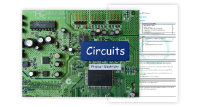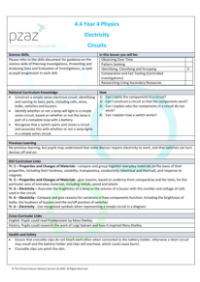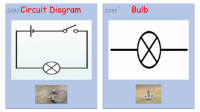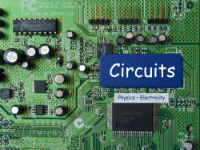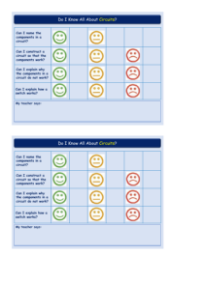Circuits - Teacher Explanation

Science Resource Description
Welcome to Lesson 4.4 on Circuits, part of the Year 4 Electricity Unit. This lesson aligns with several National Curriculum objectives, ensuring that pupils can construct a simple series electrical circuit and identify its basic components, such as cells, wires, bulbs, switches, and buzzers. They will also learn how to determine if a lamp will light up in a series circuit by establishing if it forms a complete loop with a battery. Furthermore, the concept of how a switch operates to open and close a circuit will be introduced, which is essential for understanding the functionality of circuits and for safety reasons. Pupils will be using materials equipped with crocodile clips that require careful handling to avoid pinching skin and to prevent short-circuiting by ensuring the clips do not touch when attached to battery holders.
The lesson offers cross-curricular opportunities, linking to English through readings from "Frankenstein" and to history with Luigi Galvani's experiments that inspired Mary Shelley's novel. Initially, pupils will engage in hands-on activities to build circuits, identifying and correctly connecting components to illuminate a bulb. They will explore the differences between a cell and a battery and the importance of a complete circuit for the flow of electrical energy. The lesson progresses to the introduction of circuit diagrams, teaching pupils to use symbols and conventions for clear representation. They will also examine the function of a switch in a circuit, understanding its role in conserving battery life by controlling the flow of electricity. Finally, pupils will apply their knowledge creatively by constructing a circuits game, reinforcing the concept that components only function in a closed circuit, and preparing them for the next lesson on electrical conductors and insulators.

